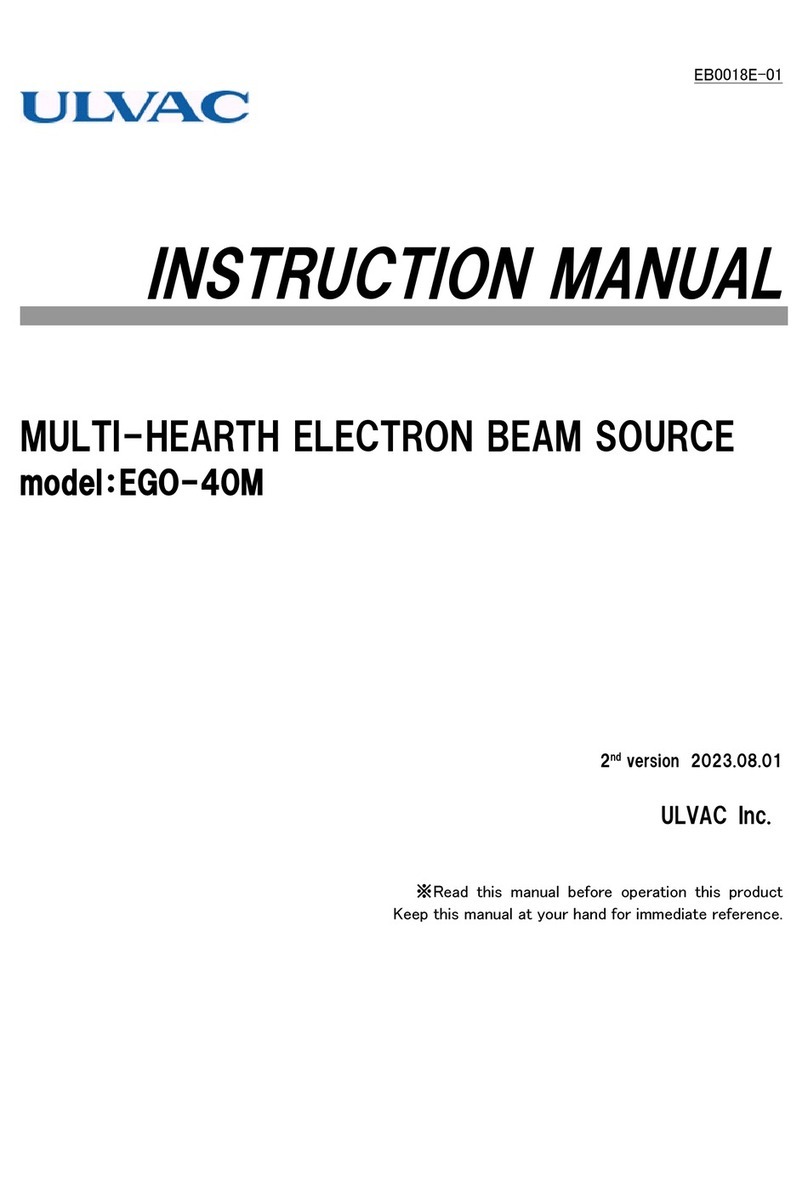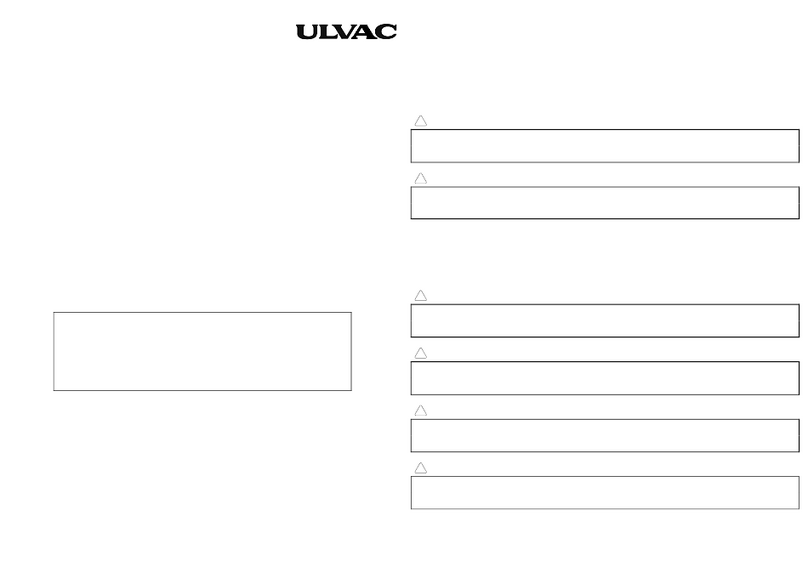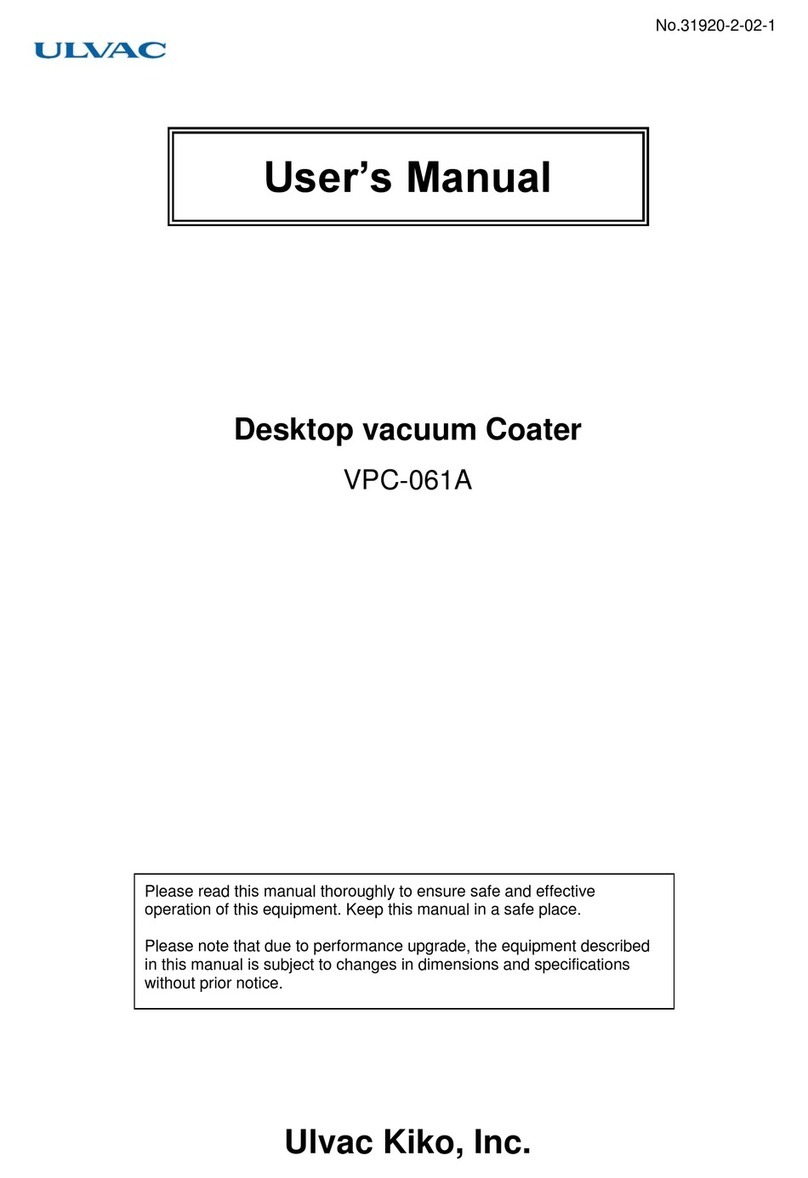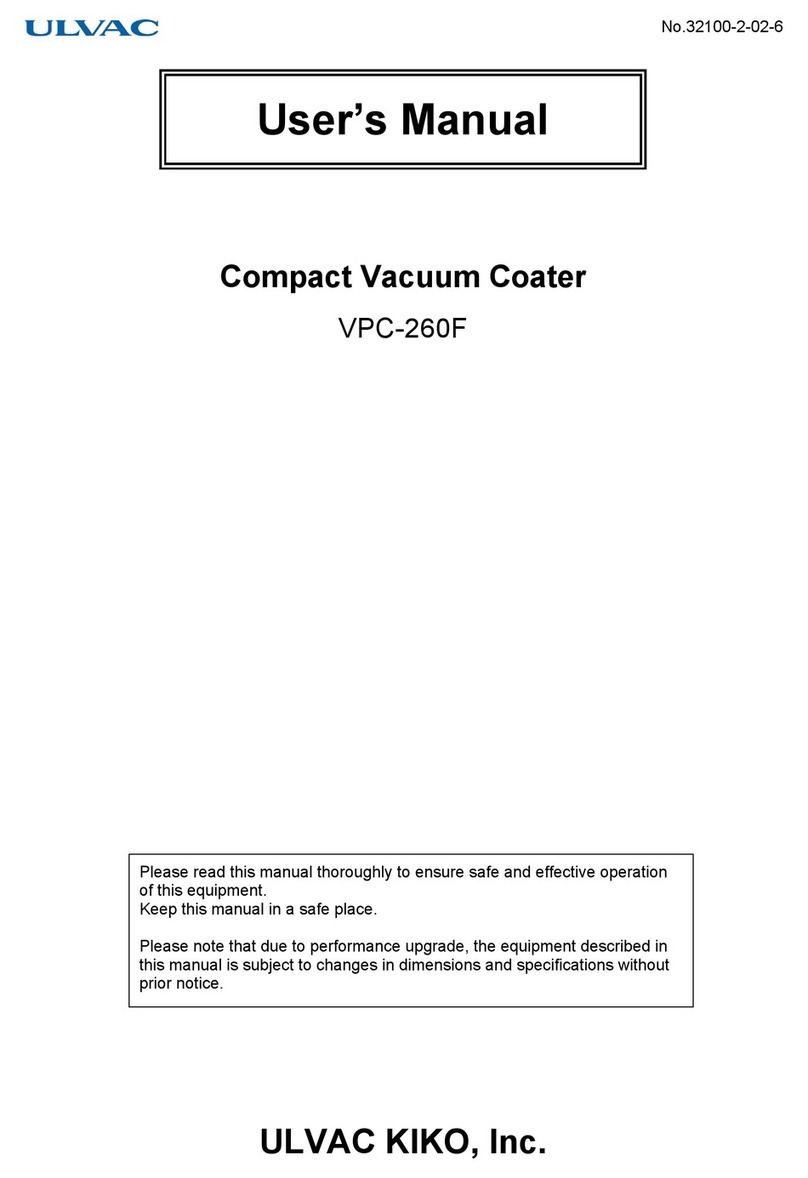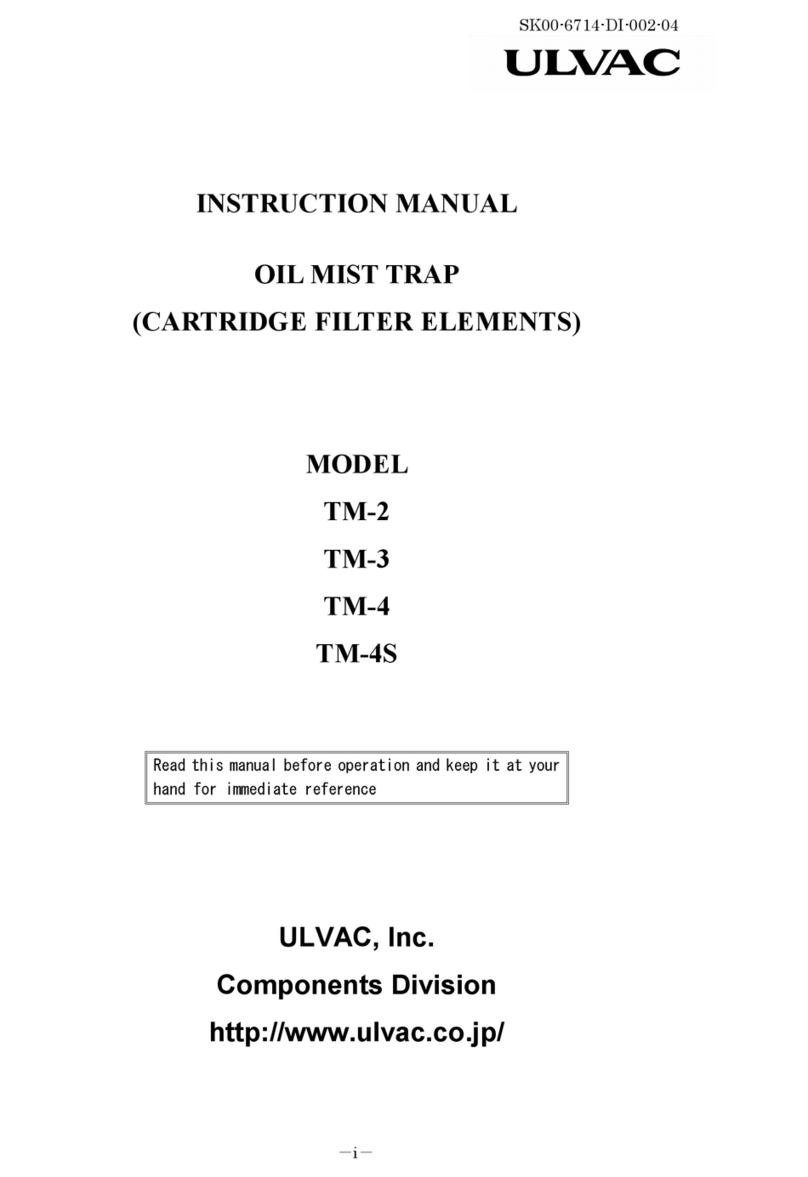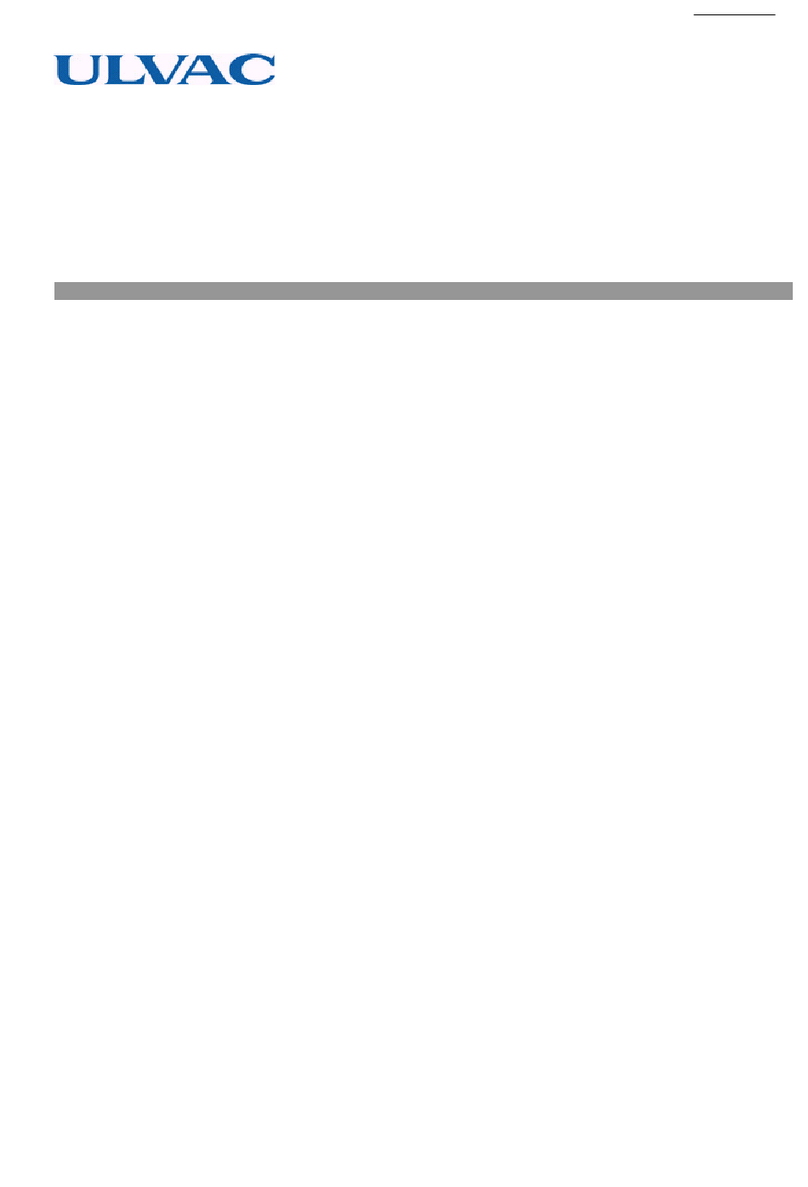
1
(1) Before Using
1. Target Users
Only persons who have used vacuum deposition equipment or trained based on this
manual may operate this equipment.
2. Read the Manual Thoroughly
Please read this manual thoroughly in order to use the equipment in a safe and correct
manner.
Please pay particular attention when reading the section “To Safely Use This Equipment”.
3. Keep This Manual in a Safe Place
Keep this manual in a safe place.
After reading this manual, be sure to keep it in a safe place where it is readily accessible
to other users.
4. Warranty
(1) The warranty for this pump (this equipment) extends for a period of one year from the
date of shipment.
(2) Any malfunctions or defects which occur under normal usage conditions during the
warranty period will be repaired free of charge.
Note, the warranty stated here is an individual warranty covering the pump. In addition,
the scope of the warranty coverage concerning repairs is limited to the repair and/or
replacement of parts.
Normal usage conditions refer to the following:
a) Ambient temperature and humidity during operation: 7 - 30°C, below 85% RH
b) Operation in accordance with the user manual
(3) Repair fees will incur during the warranty period for the following cases:
a) Malfunctions due to a natural disaster or fire.
b) Malfunctions caused by special atmospheric conditions, such as salt damage,
inflammable gas, corrosive gas, radiation or pollution.
c) Malfunctions caused by usage conditions that differ from those stated in the user
manual (performance specifications, maintenance and inspection, etc.).
d) Malfunctions caused by modifications or repairs carried out by a party other than
the manufacturer, or by a service company not approved by the manufacturer.
e) Malfunctions caused by noise (electric disturbance).
f) Malfunctions that occur when not using a rated power supply.
g) Malfunctions that occur when there is an abnormal rise in internal pressure due to
the pump exhaust outlet being blocked during operation, etc.
h) Malfunctions that occur, when the pump is damaged as a result of being dropped
or falling, etc.
i) Malfunctions which are determined by the manufacturer’s technical personnel to be
caused by conditions that do not comply with the usage conditions for this vacuum
pump.
j) Malfunctions due to the replacement of consumables.
(4) Disclaimer
a) We shall not be liable for any malfunctions of our products caused by the customer,
regardless if the malfunction does not fall within the warranty period, nor shall we
be liable for any loss of opportunity for the customer’s clients or for compensation
for any damages to other products, labor costs, production loss, transportation
expenses and other related work.
b) We shall not be liable for any claims and patent infringements, including secondary
damages, filed a claim by a third party against the customer.
5. Statutory Requirements for Disposal
Follow all statutory and local authority regulations when disposing of this equipment
including used oil.
Comply with regulations upon disposal.
6. Safety during Repair
When requesting repairs to this product, provide a full description of the conditions of use
(particularly any use of dangerous materials) for the safety of repair personnel.
In this case, fill in the Use Condition Check Sheet and attach to the product.
If the use conditions are unknown, repair may be refused.

